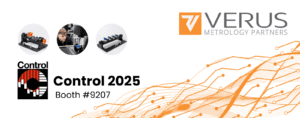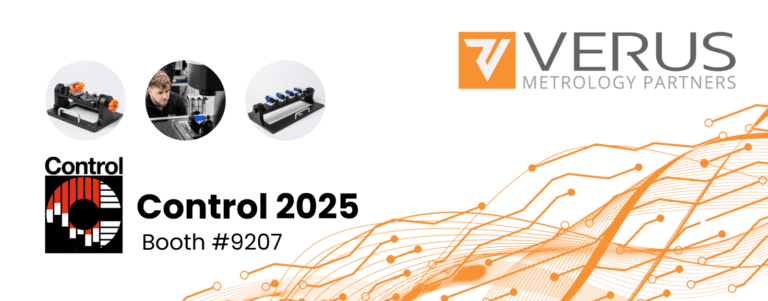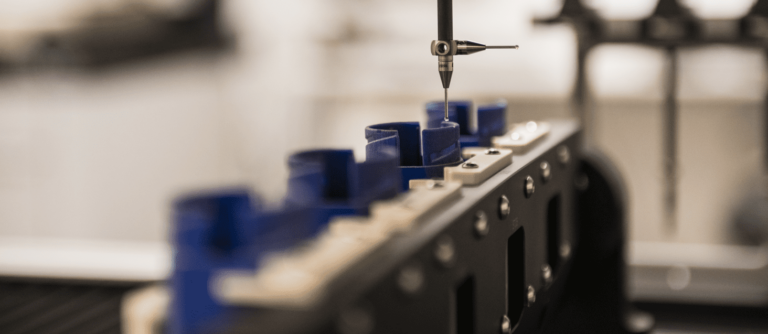It was a long time coming, and issues remain, but the new EU MDR (medical device regulations) is well and truly here. It has modernised the regulation of medical devices in the EU, but it has also brought additional costs, complexities, and challenges to manufacturers.
With most organisations now through (or well on their way through) the transition phase to MDR, attention is now turning to optimisation. This includes how to ensure you remain in compliance with all the new rules and how you can do so as efficiently and cost-effectively as possible.
Metrology should be part of your solution to MDR compliance optimisation.
Metrology can’t solve all the additional costs, complexities, and challenges that come with MDR compliance, of course. What it can do is play a significant role in a number of crucial areas.
We will explore those areas in this blog, but the starting point is to outline the MDR compliance challenges that advanced metrology solutions can help resolve.
A Greater Burden on Medical Device Manufacturers
MDR replaced the old MDD (medical device directive) for medical device products in the EU, and its introduction resulted in a number of changes. Those changes increased the compliance burden for medical device manufacturers. The main examples applicable to the subject of this blog are:
- The new regulations apply to a broader range of products than the old MDD.
- Some products have had to be reclassified to a higher classification, so are subject to stricter regulations.
- The overall emphasis of the new MDR is a whole product life cycle approach to regulations and compliance. The aim of this approach is something everyone in the industry agrees with – ensuring and enhancing patient safety. It also means manufacturers now have greater responsibility once their product is on the market.
A Focus on Post-Market Surveillance
A key focus of the whole lifecycle approach is post-market surveillance. New post-market surveillance requirements mean medical device manufacturers now have enhanced regulatory responsibilities once products reach the market. Some of the essential features of post-market surveillance include:
- Post-market surveillance must be part of your quality management system.
- Post-market surveillance activities must be proactive and systematic.
- The requirement for enhanced post-market surveillance applies to both new and legacy devices.
- When issues are identified as a result of post-market surveillance activities, they must be reported and, where necessary, corrective and preventative actions (CAPA) must be implemented.
For most medical device manufacturers, enhanced post-market surveillance requirements create additional costs, complexities, and challenges – those three Cs we have been mentioning throughout the blog.
Those costs can then increase significantly whenever an issue is identified. This is because the identification of an issue triggers additional actions. The specific actions depend on the issue identified, but they include reporting the issue and, in many cases, investigating it and implementing a solution. That solution could be an expensive recall of the product, plus there are legal, customer relationship, and company reputation factors to consider, all of which can have a significant impact on costs.
How to Reduce the Cost of Post-Market Surveillance
At a high level, post-market surveillance activities have four main stages:
- Collect data
- Analyse the data
- Act on any issues that are identified through CAPA
- Follow-up on the impact of the CAPA
There are lots of tools, processes, and procedures that you can use to optimise these four stages. That said, the best way by far to reduce costs is to minimise the number of issues identified in the second stage.
The Hockey Stick Effect
Minimising the number of issues that you identify during post-market surveillance activities leaves an obvious question: how?
The answer is to enhance your quality control processes in production by utilising advanced metrology solutions.
Using metrology can also help mitigate the hockey stick effect of CAPA. The hockey stick effect describes how issues become exponentially more expensive and challenging to resolve the closer the product gets to the patient.
Identifying and resolving issues as early as possible in the production cycle is the least costly approach.
Using Metrology to Reduce the Cost and Complexity of MDR Post-Market Surveillance
Metrology is the science of measurement and is probably part of your production line’s quality control processes. What we are talking about in this blog, however, is advanced metrology solutions. This includes solutions that:
- Accurately measure and verify complex, intricate, and delicate components
- Measure multiple components at the same time
- Reduce the time it takes to accurately measure components
- Reduce the number of steps required to complete measurement processes
- Minimise human involvement in measurement processes
- Maximise the percentage of products in a batch that can be measured and quality-checked
The last point is worth expanding on further as maximising the percentage of products in a batch that can be measured improves your ability to identify non-conformities and deviations.
Improving your ability to identify non-conformities and deviations prevents defective batches from being released onto the market. This, in turn, reduces the risk of those defective batches from becoming a reportable and actionable issue as a result of your post-market surveillance activities.
Wider Advantages
This blog is focused on reducing the cost and complexity of MDR compliance, but advanced metrology solutions like those described above bring a range of other advantages. Patient safety, product quality, and company reputation are part of that list.
Metrology can also play a role in identifying why a nonconformity occurred and how it can be corrected.
Furthermore, advanced metrology solutions can also identify nonconformities before they occur, enabling the implementation of CAPA not only before the product gets anywhere near the post-market surveillance stage, but also before any defective batches are produced.
How Verus Metrology Can Support MDR Compliance
At Verus Metrology, we specialise in developing advanced metrology solutions that will identify non-conformities and deviations as early as possible in the product lifecycle. Our solutions can also be used to prevent nonconformities and deviations from occurring in the first place.
To find out more about how we can support your MDR compliance efforts, please contact us at Verus Metrology today.







